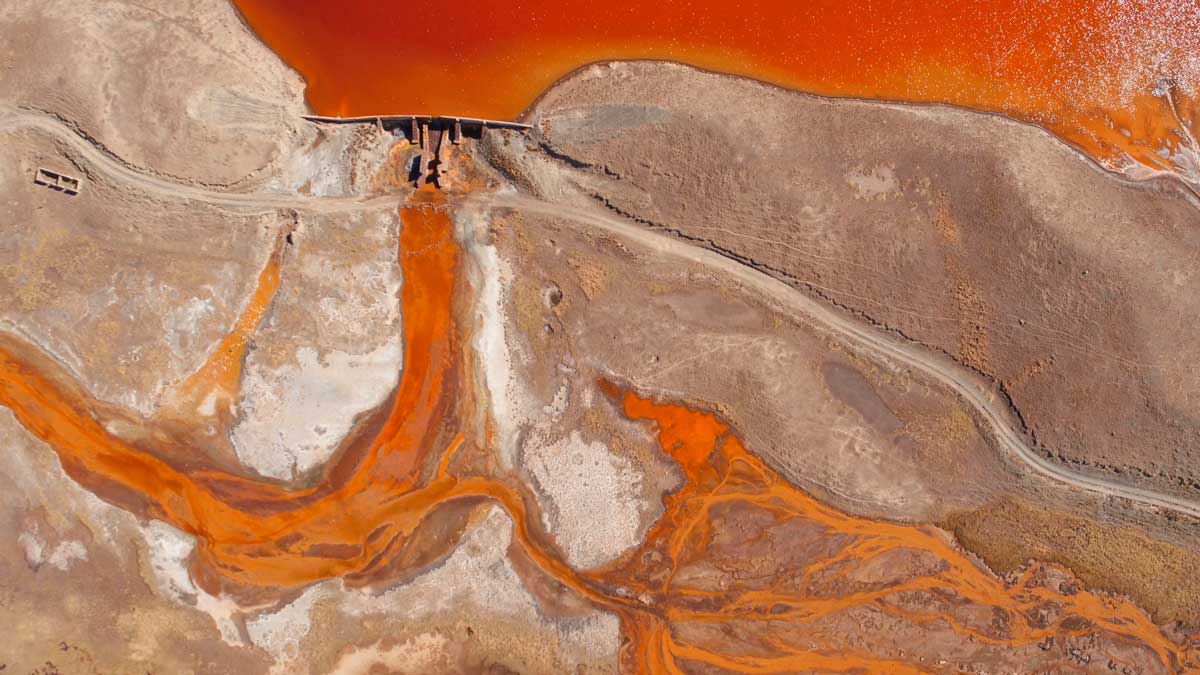
Sealed Dam, Gabriela Escobar Ari, aerial photograph, archival pigment print, 24” x 14”, 2019. Aerial view of the sealed damn at Milluni Lake. A dirt road can be seen next to the dam. The intense tones in the water show the high level of contamination. This dam used to supply potable water to both El Alto and La Paz City.
Gabriela
Escobar
Ari
Landscape Archaeology studies how landscapes change and evolve; it focuses on the way humans have not just adapted but also impacted landscapes through time.
This project proposes that the manner human beings adapt to and interact with landscapes over the course of their existence creates a sort of biography of the landscape and the people occupying them. We all leave behind a record not just of our activities but also of our attitudes and values.
Gabriela Escobar Ari’s intention with this project, produced in the Huayna Potosí region of La Paz, Bolivia, is to tell the story of a landscape, considering this landscape as a living element. Creating photographic works that chronicle how the main raw materials from this area were extracted, and by using geological and archaeological history as support for this biography, the artist demonstrates that landscapes are not just the environment we inhabit but are what determine our customs and lifestyle, and the setting in which our actions and attitudes are indelibly recorded.
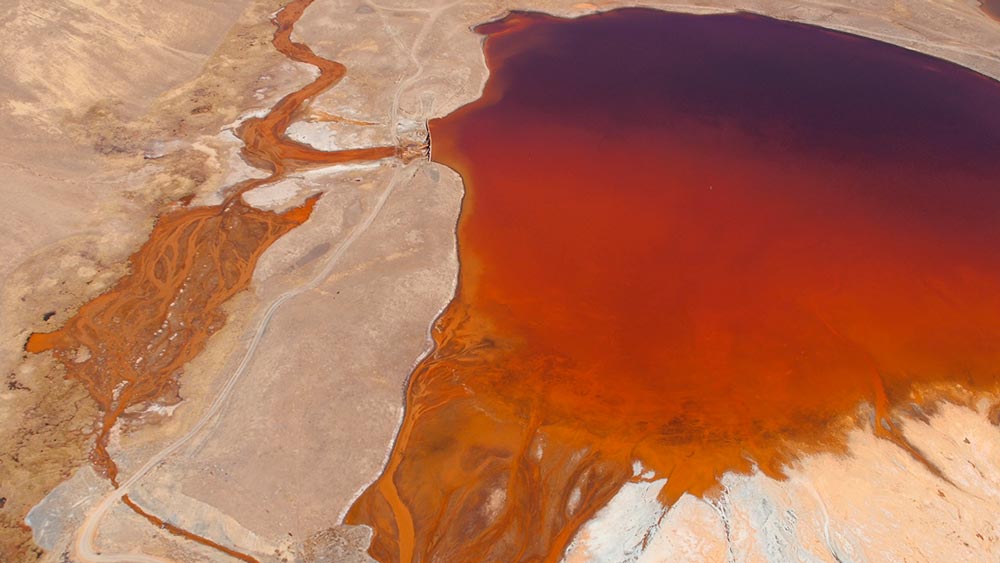
Milluni Lake View, Digital Photograph, Archival pigment print, 24” x 14”, 2019.
The intense orange to purple tones in the lake are due to heavy metals sitting on the base. At some point all the discharge from the mines around were dumped in the river and ended up in this sealed damn. The images are not color edited or saturated.
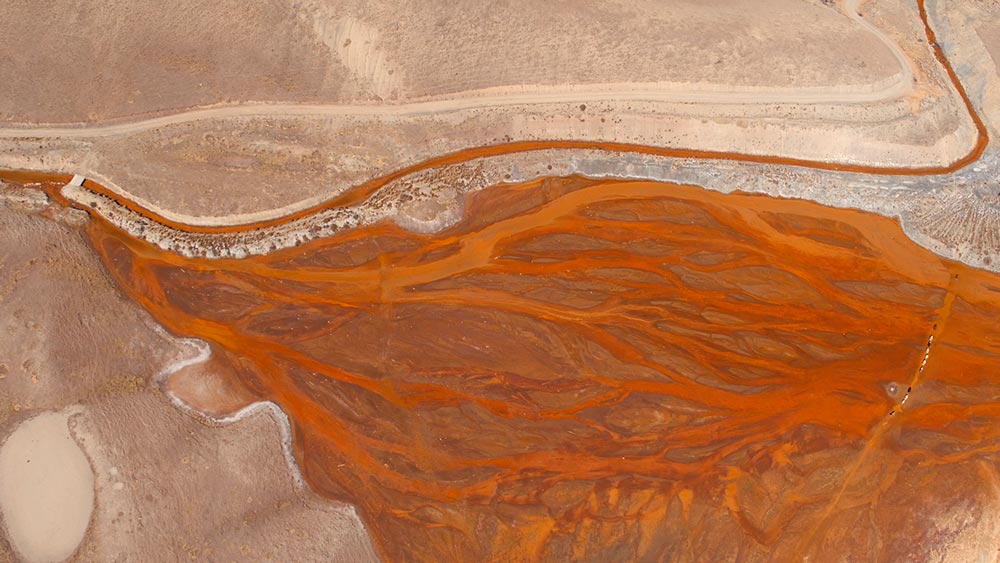
Dam View, Digital Photograph, Archival pigment print, 24” x 14”, 2019.
Aerial view of the accessing road to the Milluni Lake. The dry land of the Bolivian Altiplano somehow matches the strong color of the lake. At the bottom right, a few llamas are crossing the lake.
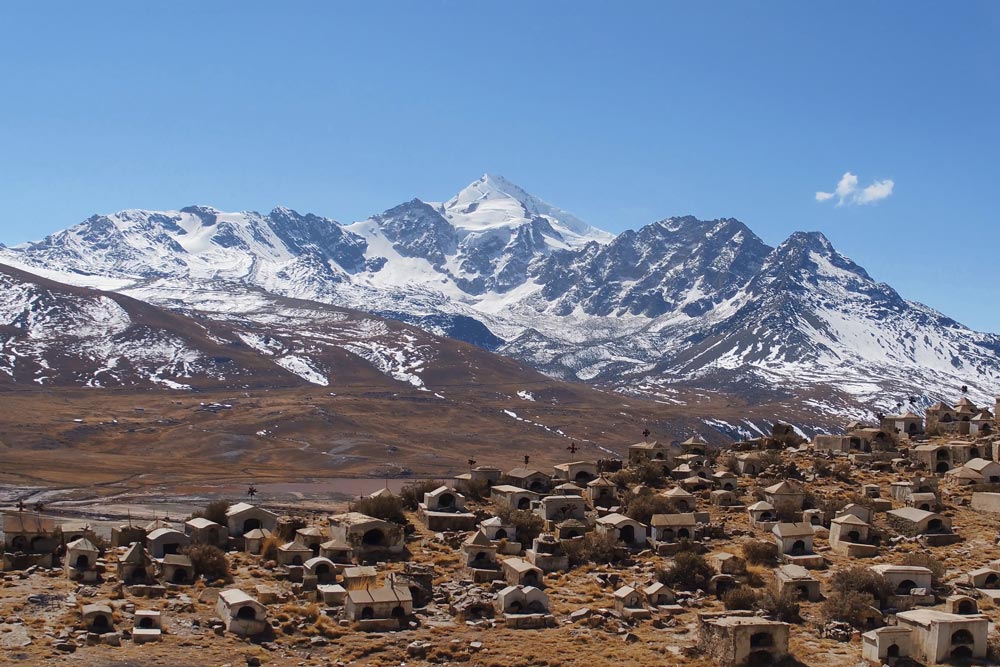
Huayna Potosí Mountain and Milluni Cemetery, Digital Photograph, Archival pigment print, 12” x 8”, 2019.
In the background named in local language Aimara the glacier Huayna Potosí means ‘The Young Mountain’. In front lies the Milluni Cementery. In 1965, unionized miners were on strike due against the military coup. The miners established an opposition base against the new Bolivian government, even operating a radio station that broadcasted what was happening to nearby La Paz City. The government (it was one of the many military dictatorships in Bolivia’s history) sent in troops, tanks and bombers, perpetrating the “Massacre of Milluni” on 24 May 1965.
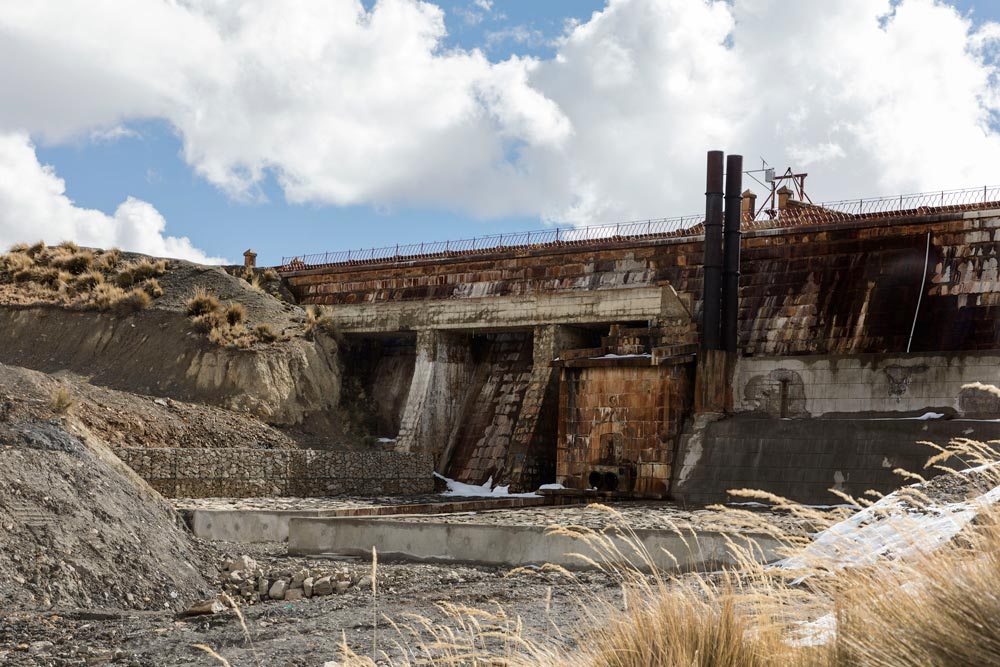
Old Structure, Digital Photograph, Archival pigment print, 12” x 8”, 2019.
Part of the old dam structure that today contains the contaminated water. At the top there is a small solar panel used to monitor the level of the lake.
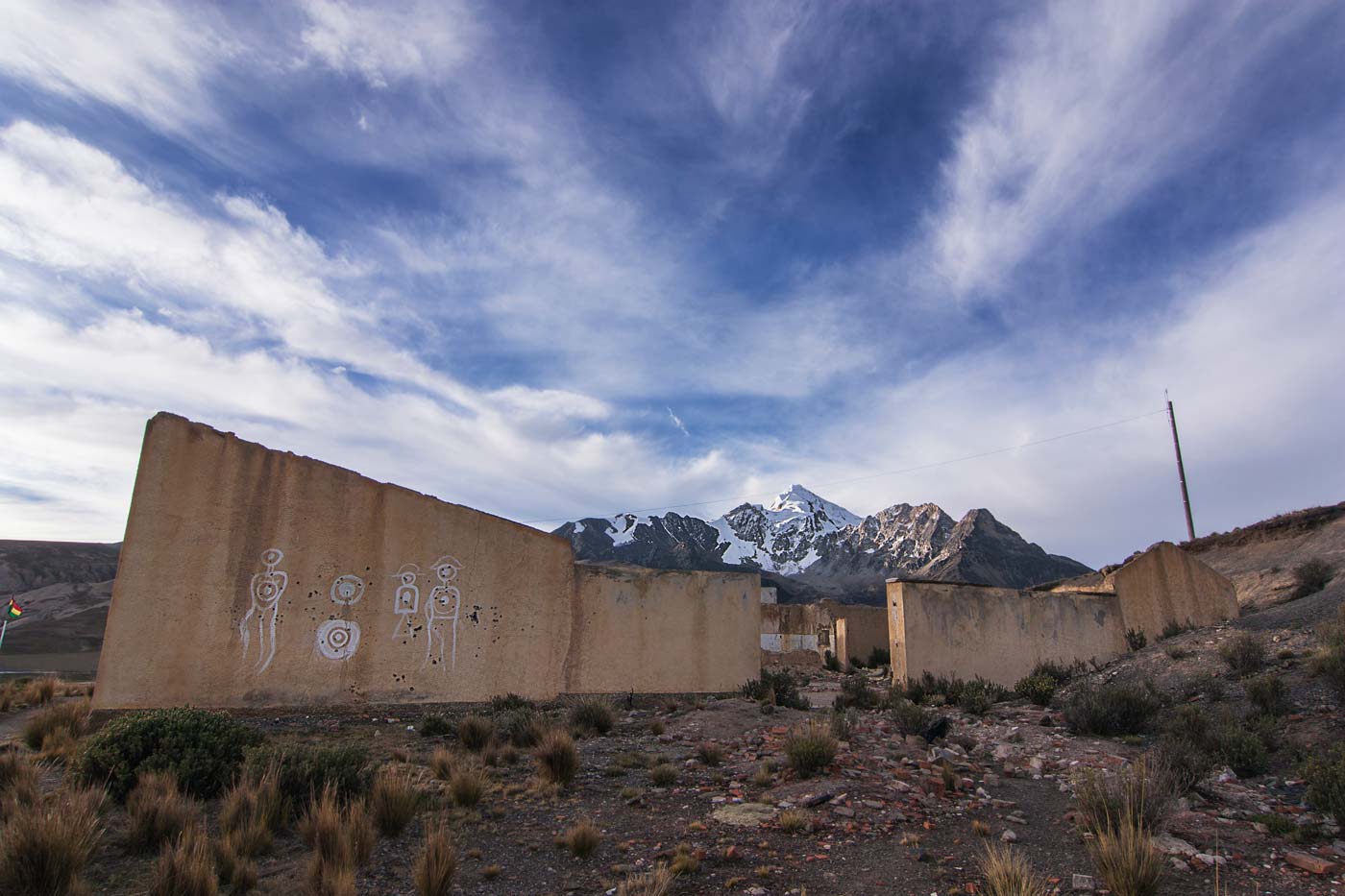
The mountain as the only witness, digital photograph, 12” x 8”, 2019.
During the “Massacre of Milluni” in 1965, the military used this location as a shooting range. They painted human shapes and targets on the wall; it is presumed that they killed some of the miners here and then buried them in a mass grave.
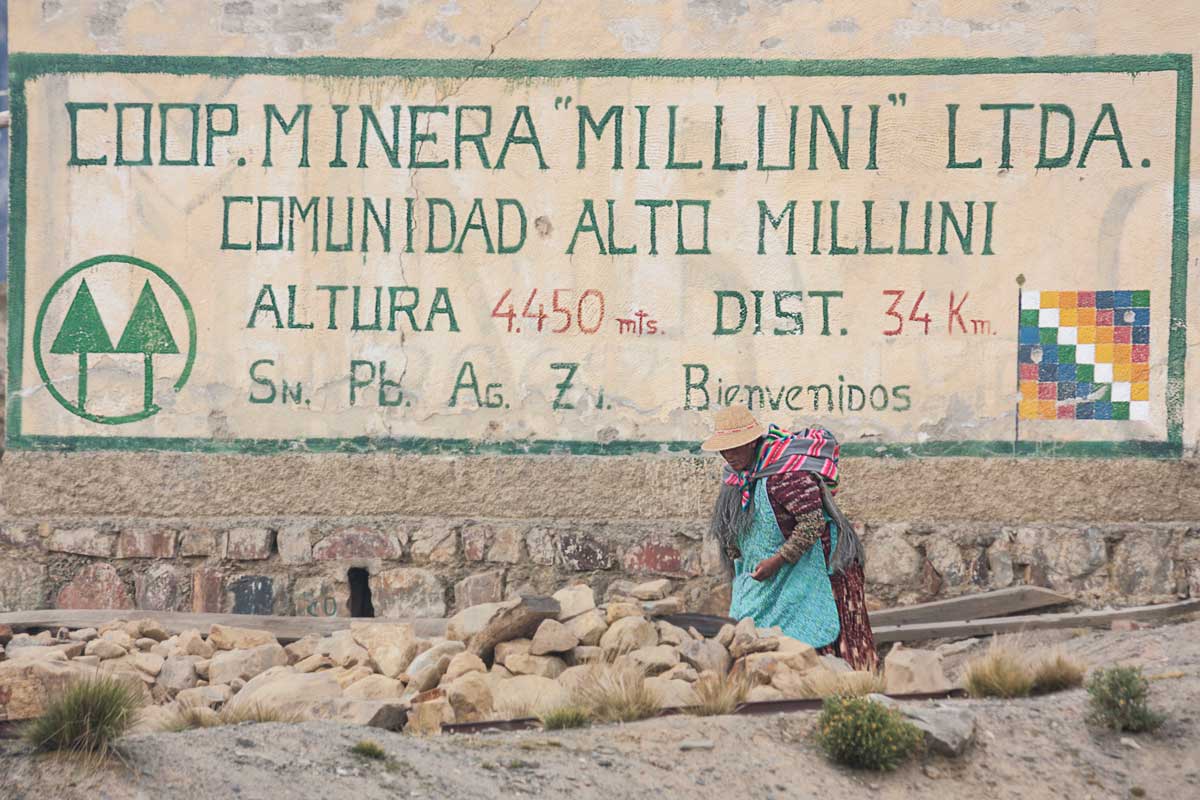
Welcome to Miluni, digital photograph, archival pigment print, 12” x 8”, 2013. A woman collecting cans left by visitors in front of the welcome sign to the local community.
“The highly industrialized world is racing ahead and stumbling over the future…[this is]…the result of the work of people throughout the world, although in practice it may benefit few. The developed world produces only for those who can consume-approximately one-fifth of all people. The remaining four-fifths, who could theoretically benefit from surplus production, have no way of becoming consumers. The destiny of men and women is to create a new world, to reveal a new life, to remember that there exists a frontier for everything except dreams. In this way, they adapt, resist, believe, and survive.”
Sebastião Salgado
Gabriela Escobar Ari is a Bolivian-Canadian photographer based in Fernie, BC. Her background in Archaeology and Social Studies influences her work and her interest in human consciousness. Ari’s Latin-American heritage motivates some of her personal projects, which reflect concepts like gender, identity, regional culture and history. Gabriela Escobar Ari is passionate about film photography, vintage alternative photographic methods, and conservation and restoration of old photographic materials. She worked as one of the lead photographers of the archaeological collection of the Ethnography National Museum in Bolivia (MUSEF). Since moving to Canada, Ari completed the Photography Program at SAIT (Calgary) and works as a freelance photographer. Her work has been published in academic journals, documentaries, and travel magazines in Canada, France, United States and Bolivia.
Kootenay Gallery of Art
120 Heritage Way
Castlegar, BC V1N 4M5
kootenaygallery[dot]telus.net
250-365-3337
Oxygen Art Centre
#3-320 Vernon St. (alley entrance)
Nelson, B.C. V1L4E4
info[dot]oxygenartcentre.org
250-352-6322
We acknowledge with gratitude that our galleries are located on the unceded traditional territory of the sn̓ʕay̓ckstx Sinixt Arrow Lakes and Yaqan Nukij Lower Kootenay Band peoples in Nelson and the unceded traditional territory of the sn̓ʕay̓ckstx Sinixt Arrow Lakes in Castlegar. We would like to thank the Sinixt, Yaqan Nukiy Ktunaxa, and the many diverse Indigenous and Métis people who live here now for the opportunity to live, work and host cultural experiences within this beautiful watershed.